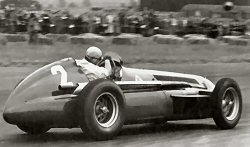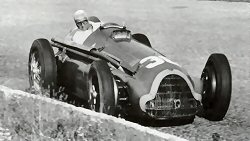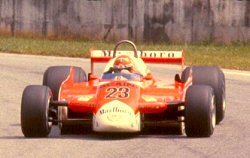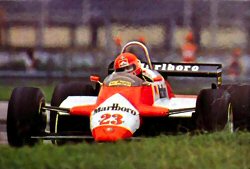|
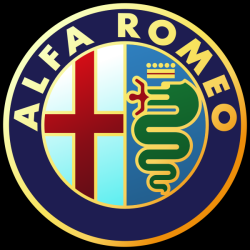 |
Alfa Romeo SpA
 |
|
|
| Principles |
Giampaulo Pavanello ITA (1984-85)
Carlo Chiti
ITA (1979-83) |
| Designers |
Luigi Marmiroli ITA (1984-85)
Gerard Ducarouge FRA (1982-83)
Carlo Chiti
ITA (1979-81)
Robert Choulet FRA (1979-81)
Gioacchino Colombo ITA (1937-51)
Vittorio Jano ITA (1923-32) |
Alfa Romeo F1 History
& Team Record
Alfa Romeo's involvement in Grand
Prix racing dates back to 1923 when Vittorio Jano was brought in from Fiat and
spearheaded much success from 1925's Automobile World Championship on. His
incredible P3 design from 1932 is regarded as the first modern single-seater
racing car and was driven to may victories by Tazio Nuvolari and Rudolf
Caracciola. When Alfa Corse ran into financial trouble and closed its doors at
the end of the season the team manager, Enzo Ferrari, setup his own team to run
the cars - Scuderia Ferrari.
The factory returned to competition
in 1938 with the 158 Voiturette (1.5L class) but its run of initial success was
stopped by World War II. When Formula One was created in 1947 Alfa Romeo formed
a team using a modified version of the pre-war car, called the Tipo 158/47 and
enjoyed enormous success.
When the Formula One World
Championship was created for 1950 the works Alfa Romeo team totally dominated
taking the win, pole position and fastest lap at all six events they entered
(the Indianapolis 500 was also included in the championship) and Nino Farina
winning the title. Had there been a Manufacturers Championship they would
have crushed the competition. The car was slightly modified for 1951 and the
team continued its run of success, despite strong competition from Ferrari, with
Juan Manuel Fangio taking his first World Drivers' Championship.
For 1953 it was decided to run the
World Championship to Formula Two regulations, thereby making the 159 obsolete.
Rather than build a new car Alfa Romeo decided to withdraw from Formula One and
concentrate on sportscar racing. Remarkably during the 1950 and 1951 seasons,
the team had used just nine engine blocks - all of which had been manufactured
before World War II.
| Year |
Chassis |
Engine |
Tyres |
Drivers |
Starts |
Wins |
Poles |
F Lap |
Pts |
Pos |
| 1950 |
158 |
Alfa Romeo 158 L8S |
PI |
Fangio
Farina
Fagioli
Parnell (1 race) / Taruffi (1 race) /
Sanesi (1 race) |
6 |
6 |
6 |
6 |
- |
- |
| 1951 |
159 |
Alfa Romeo 159 L8S |
PI |
Fangio
Farina
Sanesi (4 races)
De Graffenried (3 races) / Fagioli (1 race) / Pietsch (1 race)
Bonetto (4 races) |
7 |
5 |
4 |
7 |
- |
- |
| |
|
|
|
TOTALS: |
13 |
11 |
10 |
13 |
- |
|
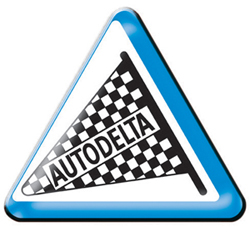
The company officially set up a
racing department, Autodelta SpA, in March 1963 under Carlo Chiti to run the
Alfa Romeo Guilia TZ sports car program. The TZ engine appeared a few times in
F1 during the 60's with Scuderia Serenissima entering a De Tomaso powered by the
Alfa Romeo 4 (1.5L 4 cylinder) at the 1961 Italian GP and a handful of
privateers using the engine at the South African GP in 1962, 1963 and 1965.
The quest for World Sportscar
Championship victory against the Porsche factory cars led to the development of
the Tipo 33 program. Autodelta developed various engines including the 3.0L V8
33/3 in 1969. For the 1970 F1 season the engine was supplied to
McLaren who ran third car for factory sportscar
driver Andrea de Adamich but the combination was slow and unreliable. In 1971
they tried a similar program with March for De Adamich
and Nanni Galli but the results were just as disappointing and the F1 program
was dropped.
Changes to the World Sportscar
Championship rules saw Chiti and Autodelta develop a 3.0L flat 12 engine, the
15-112 which won the championship in 1975 (and again in 1977). Despite the
success of their Ford powered cars the owner of the
Brabham F1 team, Bernie Ecclestone, seeking an advantage over their
similarly powered rivals approached Alfa Romeo and negotiated a free supply of
the 15-112 engines for use from 1976 on.
The relative success of the
Alfa-powered Brabham team allowed Carlo Chiti to convince Alfa to return to F1
with a works team. Bruno Giacomelli tested the 15-112 powered 177 chassis
extensively before appearing at Zolder for the Belgian GP and then again in
France (the team skipped Monaco). The team disappeared until September when they
debuted the ground effect, V12 powered 179 at the Italian GP with a second car
for Vittorio Brambilla, running the final 3 races of the season.
Patrick Depailler was brought in
to partner Giacomelli for 1980 and his development skills help improve the
car's speed but it continued to be very unreliable. Tragedy then struck when
the Frenchman was killed in testing at Hockenheim before the German GP. The
team continued with one car until Brambilla returned for two races and then
the team ran their young protege, Andrea de Cesaris for the final two GP. In
the final race of the year at Long Beach, Giacomelli took pole and was
leading easily when an electrical failure put him out once again.
In something of a coup former World Champion Mario Andretti signed with the
team for 1981 following a couple of disappointing seasons with
Lotus. After a fourth place finish in the opening
race the retirements piled up and Andretti did not score points again, while
Giacomelli did not score until the final two races. De Cesaris rejoined the
team for 1982 in place of Andretti but the strings of retirements remained
the same with a pole (Long Beach) and podium (Monaco) for De Cesaris the
only bright spots. At this time the Alfa board began to lose patience with
the F1 program and from 1983 the cars were run by the Euroracing team with
Autodelta supplying the engines.
Alfa Romeo unveiled its
turbocharged engine for 1983 but the V8 design made it very heavy and overly
complex, leading once again to a string of mechanical failures. De Cesaris did
however manage two second place finishes (Germany and South Africa) and led in
Belgium before retiring (taking fastest lap). Euroracing sold the 183T's to
Osella at the end of the season and introduced the
kevlar composite 184T for 1984 with new drivers and sponsorship from Italian
clothing company Benetton. Although Ricardo Patrese managed a podium finish in
Italy, the cars were once again woefully unreliable throughout the year.
This led to Carlo Chiti leaving
Alfa Romeo after more than twenty years and setting up Motori-Moderni to supply
engines to Minardi. Autodelta was absorbed back into
its parent before the 1985 season as Alfa's financial losses mounted, while on
the track the season was a disaster with neither driver scoring a point. The
bloated 185T design was so bad they reverted back to using the year-old 184T
after eight races. At the end of the season it was announced that Alfa Romeo
would no longer supply engines to Euroracing (or Osella) with a view to
returning in 1987 as an engine supplier to Ligier.
The Euroracing Team withdrew from F1 and morphed into the
EuroBrun team for 1988.
| Year |
Chassis |
Engine |
Tyres |
Drivers |
Starts |
Wins |
Poles |
F Lap |
Pts |
Pos |
| 1979 |
179
177 |
Alfa Romeo 1260 V12
Alfa Romeo 115 F12 |
GY |
35
Giacomelli (4 races)
36 Brambilla (2
races & 1 DNQ) |
5 |
0
|
0
|
0
|
0
|
- |
| 1980 |
179 |
Alfa Romeo 1260 V12 |
GY |
23
Giacomelli
24
Depailler (8) / Brambilla (2) / De
Cesaris (2) |
14
|
0
|
1 |
0
|
4 |
11th |
| 1981 |
179D
179C
179B |
Alfa Romeo 1260 V12 |
MI |
22 Ma
Andretti
23 Giacomelli |
15 |
0
|
0 |
0
|
10 |
9th |
| 1982 |
182
182B
179D |
Alfa Romeo 1260 V12 |
GY
MI |
22 De
Cesaris
23 Giacomelli |
16 |
0
|
1 |
0
|
7 |
10th |
| 1983 |
183T |
Alfa Romeo 890T V8t |
MI |
22 De
Cesaris
23 Baldi |
15 |
0
|
0 |
1 |
18 |
6th |
| 1984 |
184T |
Alfa Romeo 183T V8t |
GY |
22
Patrese
23 Cheever |
16 |
0
|
0 |
0 |
11 |
8th |
| 1985 |
184T
185T |
Alfa Romeo 890T V8t |
GY |
22
Patrese
23 Cheever |
16 |
0
|
0 |
0 |
0 |
- |
| |
|
|
|
TOTALS: |
97 |
0 |
2 |
1 |
50 |
|
Return to the F1 Teams Index


